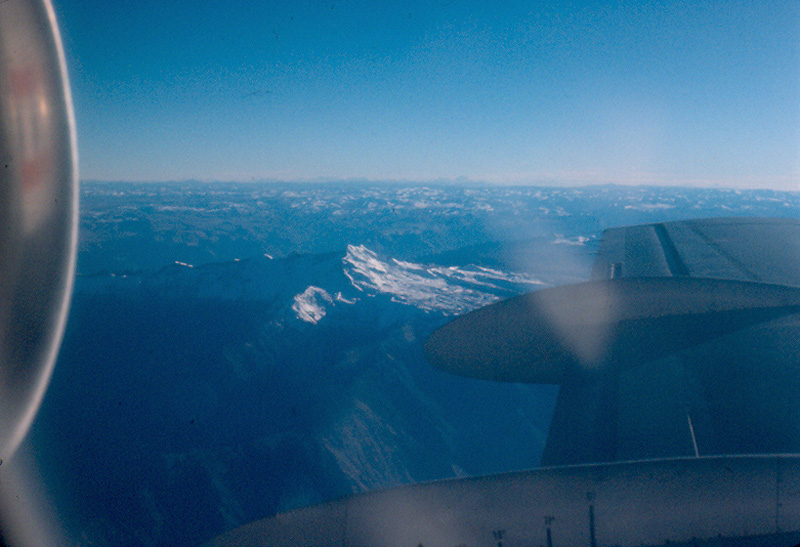Source: WTL© digitized analogue photo taken the professor-photographer's airplane window over the Peruvian Andes.
Comments: This photo was taken during the summer. The idea is to show what a tremendous geographical barrier the Andes forms for the three regions of Peru and indeed for all of South America. The Andes rival the Himalayas in terms of being the Earth's most formidable mountain barrier. The range is about 5,500 miles long and 300 miles wide at its widest place. The average (!) height of the peaks is 13,000 feet. The highest peak is Aconcagua (22,841 ft) in Argentina near the border with Chile, while many other Andean peaks are higher than 22,000 feet high. Furthermore, illustrating how forbiding the Andean chain is, it is dotted with volcanoes that erupt often. For example, Ecuador has had seven eruptions during the last one hundred years, and the San José volcano in Chile has erupted seven times since 1822. Note, too that the Pacific Ocean phenomenon known as El Niño--a reference to the fact that early Spanish colonists noticed that heavy rains and warm ocean temperatures happened roughly every ten years and often lasting several years regularly occurred at the time of Christmas, which is a Christian celebration of the birth of the Christ child; i.e., el Niño, in Spanish.


